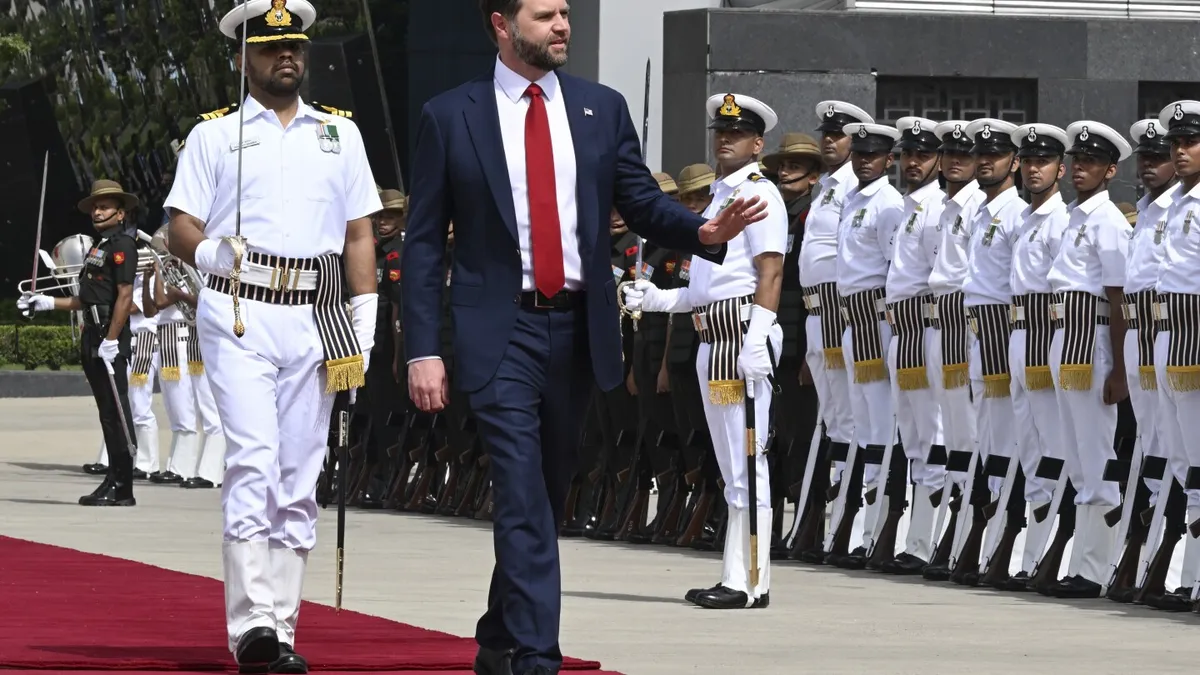
On Monday, U.S. Vice President JD Vance commenced a significant four-day visit to India, a trip that underscores New Delhi’s efforts to negotiate a crucial bilateral trade deal with Washington while simultaneously addressing concerns about potential U.S. tariffs. The visit aims to further strengthen the already robust ties between the U.S. and India, particularly in light of the ongoing challenges posed by China.
Vance’s itinerary includes a key meeting with Prime Minister Narendra Modi on the first day of his visit. This conversation is expected to build upon discussions held earlier this year when Modi met with President Donald Trump in Washington. The U.S. currently stands as India’s largest trading partner, and both nations are engaged in negotiations to finalize a bilateral trade agreement by the end of this year. The ambitious goal is to more than double bilateral trade, aiming for a remarkable $500 billion by 2030.
The backdrop of Vance's visit includes Trump’s paused tariff program, which has affected various nations, including India. This visit also coincides with the escalating trade tensions between Washington and Beijing, making India’s position in the region more critical. The Indian Foreign Ministry noted that Modi and Vance would “review the progress in bilateral relations” and discuss “regional and global developments of mutual interest.”
As highlighted by spokesperson Randhir Jaiswal, Vance's visit is poised to “further deepen the India–U.S. comprehensive global strategic partnership.” This partnership is particularly essential for counterbalancing Chinese influence in the Indo-Pacific region. India is a vital ally for the U.S., and its membership in the Quad—comprising the U.S., India, Japan, and Australia—reinforces this strategic alliance.
Vance's trip is not solely focused on diplomacy; it combines business with personal experiences. Upon arrival at New Delhi’s Palam airport, he was welcomed with an Indian classical dance performance. Accompanied by his wife, Usha Vance, their three children, and U.S. officials, the family has already visited the Akshardham Hindu temple and plans to explore iconic sites such as the Taj Mahal and the Amer Fort, a UNESCO World Heritage site.
The urgency of trade negotiations cannot be overstated for New Delhi, especially considering the potential impact of Trump’s tariffs on key sectors such as agriculture, processed food, auto components, high-end machinery, medical equipment, and jewelry. Harsh Vardhan Shringla, India’s former foreign secretary and ambassador to the U.S., emphasized the significance of Vance’s visit amidst global trade upheavals. He noted that under Trump’s presidency, India has an opportunity to integrate more deeply into U.S. markets and global supply chains.
Modi’s government is actively seeking to attract investment from prominent figures such as Elon Musk, CEO of Tesla and SpaceX. Recently, Musk’s Starlink signed agreements with two leading Indian telecom operators to provide satellite-based internet services. Musk has also indicated plans to visit India later this year, hinting at potential advancements in the electric vehicle sector within the country.
India remains a crucial defense partner for the U.S., having integrated advanced American military technology into its armed forces. Both nations are expected to announce a ten-year framework later this year to enhance their defense collaboration significantly.
As the visit unfolds, the outcomes of Vance's discussions with Modi could have far-reaching implications for the future of U.S.-India relations, especially in the realms of trade, defense, and regional stability.